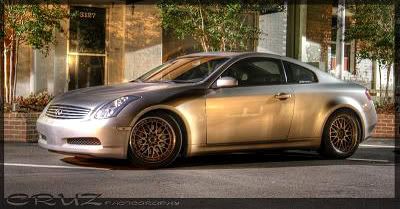I am trying to find the best a/f ratio for my carburetor. I think most know my setup. It is a VG30e with 2 barrell Holley Carb in my 510. I don't know the jet size as this will probably be what will fix all by swapping out jets but I am trying to just get this thing running safe enough for autox the next few weekends.
Alright this is kind of what is going on right now when I am at idle it is around
11.0. Which is rich, when I get on it full throttle it goes up to 13 range. And leans out some. On holley carbs you can't really adjust air/ fuel mixture at full throttle. You can only adjust at idle essentially.
Questions:
Would you advance or retard the timing to get the fuel to burn better?
It seems as if my setup is back asswards because I know the jets are to big, I am really getting around 12 mpg.
So I know I need smaller jets but essentially what should the car be reading
at idle, at partial throttle and full throttle?
Hopefully QD doesn't tell me I posted in the wrong forum.






 Reply With Quote
Reply With Quote











